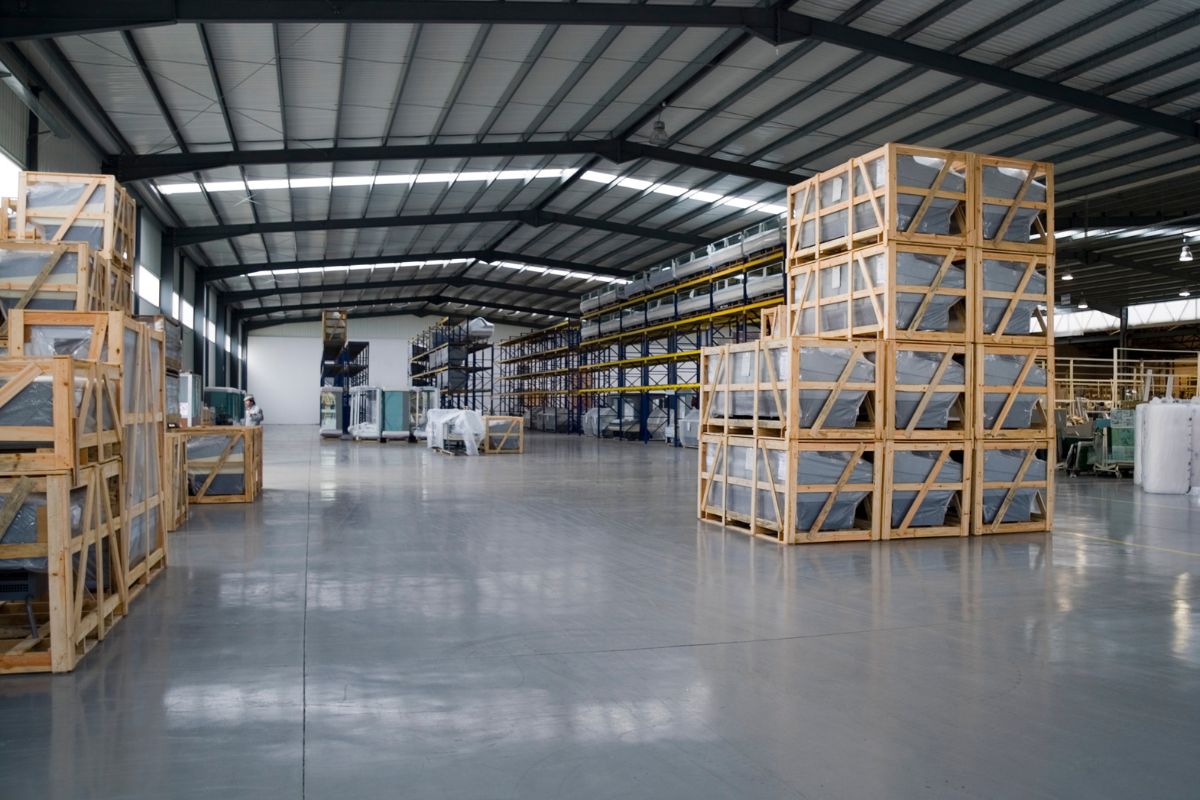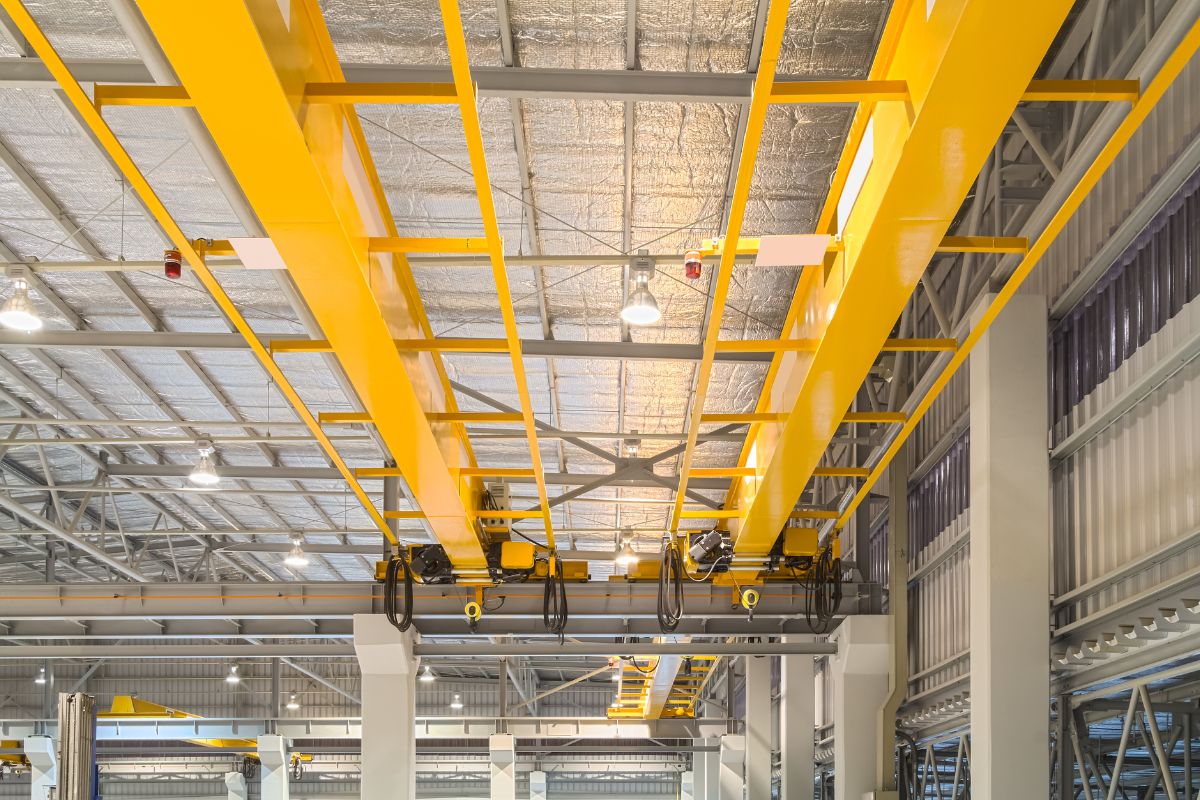Modern industries prioritize safety and efficiency in lifting and material handling. These advantages become much more pronounced when we use a crane operated through remote control. These operational systems enable users to handle heavy materials from distant locations to enhance safety and boost efficiency.
Remote control cranes establish themselves as an optimal solution among the loading and logistics sectors because automation systems continue to gain popularity within multiple manufacturing operations and construction activities and shipping activities.
Remote-operated cranes present a very innovative means of lifting and material handling, guaranteed to foster safety, efficiency, and accuracy in the industry.
Such cranes obviate the need for cabin manual control and thus reduce operator risks and facilitate unhindered maneuverability. The cranes enhance workflow through less downtime and maximize productivity within the domain of work.
What is a Remote-Controlled Crane?
A remote control crane operates as a modern lifting mechanism that works through wireless commands. Rather than moving and positioning loads by means of manual control from an operator’s cabin, remote-controlled cranes are equipped with a handheld remote or wireless transmitter. Components of this system include:
- Remote transmitter – A handheld device fitted with buttons for the different functions of the crane.
- Receiver unit – Installed on the crane that accepts signals coming from the remote.
- Electric motor and hoist – Used to raise and lower loads.
- Safety sensors – Prevent accidents as well as signal interference-related problems.
The Remote Control Cranes are Categorized into Several Types to Satisfy Industrial Requirements
- Overhead Remote Control Cranes- Used in factory buildings and warehouses, where loads of substantial magnitude need to be lifted.
- Jib Remote Control Cranes- Small, space-saving cranes ideal for operation inside workshops.
- Gantry Remote Control Cranes- Used in shipping yards for lifting containers and heavy cargo.
- Tower Cranes with Remote Control- Very often used in high-rise construction for the lifting of steel and concrete.
Safety, accuracy, and efficiency are all enhanced with the invention of the remote control crane in the entire field of material handing. With the presence of an operator no longer being required in the crane cabin, these systems help reduce workplace hazards and facilitate better visibility during operations.
One of the best things about remote-controlled cranes is flexibility. Operators can control the cranes remotely from a long distance, allowing better positioning and reducing fatigue. This feature is especially useful outdoors, on construction sites, where working conditions, safety procedures, and safety issues are of the utmost concern.
In addition, cranes help enhance productivity because they provide smooth and accurate movements. Thus, companies can modernize their material handling processes with features of advanced technology that include variable speed control and programmable lifting functions. Also, the use of remote control technology eliminates human error more efficiently, which in turn reduces accidents and unnecessary damages.
Benefits of Remote Control Cranes
The many advantages of a remote control crane make it a viable investment for companies.
Enhanced Safety
- Protects operator’s exposure to hazardous environments.
- Minimizes likelihood of accidents and incidents on-site from a safe distance.
- Enhanced control with built-in emergency stop features.
Improved Efficiency
- Operators can fasten the tense with the crane from anywhere within operational range to carry on lifting.
- More precision yielding less downtime.
- No need for the other worker to assist inside the cabin of the crane.
Cost-Effective
- Reduces labor cost as less number of operators are required.
- Less wear and tear of equipment due to controlled method of operation.
- Lower maintenance cost because of advanced safety features preventing damage.
Increased Flexibility
- Operators can freely move while controlling the crane.
- Wireless operation enables better visibility of the work area.
- Can be programmed to run in automation mode to reduce manual intervention.
Key Features to Consider in Remote Cranes
Important considerations in choosing a remote control crane include the following:
- Load Capacity- It is important to consider the maximum load requirement for the crane.
- Control Range- Check how far away the operator could be while controlling the crane.
- Battery Life & Power Supply- Should preferably have a long life.
- Signal Reliability- Choose the system having anti-interference technology.
- Customization Options- Compatibility with existing equipment is also important.
Industries Using Remote-Controlled Crane
Several industries benefit by adopting remote-controlled lifting solutions:
- Manufacturing & Warehousing: organizes material handling.
- Construction: provides better safety in high-rise work.
- Shipping & Ports: helps handle large cargoes efficiently.
- Mining & Heavy Industries: reduces the dangers of working in hazardous areas.
Maintenance of Remote Control Crane
The proper maintenance ensures:
- Regular Inspections- Inspect the parts for wear and tear.
- Battery & Remote Maintenance- Change batteries at regular intervals to prevent interruptions.
- Keeping software updated- The system must be kept current to remain optimal.
- Operator training- Proper handling standards must be observed by the operators.
Common challenges and solutions
- Signal Interference: Install use of specific frequency bands to avoid interference.
- Battery drain failures: Enforce routine charge and replacement schedules for batteries.
- Mechanical failure: Preventative maintenance will limit breakdowns.
Trends of Future Development of Remote Control Cranes
Integration with artificial intelligence and Internet of Things application for real-time monitoring and automation. Strengthened wireless communication with more reliable signal. Added safety features such as collision detection and automatic load balancing.
Conclusion
The transformation of industries through using remote control cranes comes in the form of a safer workplace, an efficient workplace, and greater savings. Therefore, industry benefits in manufacturing, construction, or logistics will find moving to a remote-operated lifting system most beneficial.
The investment in the right remote-controlled crane gives value’s worth in productivity enhancement and safety in the workplace; thus, the use of remote-controlled cranes becomes a necessary element for material handling operations nowadays.
















